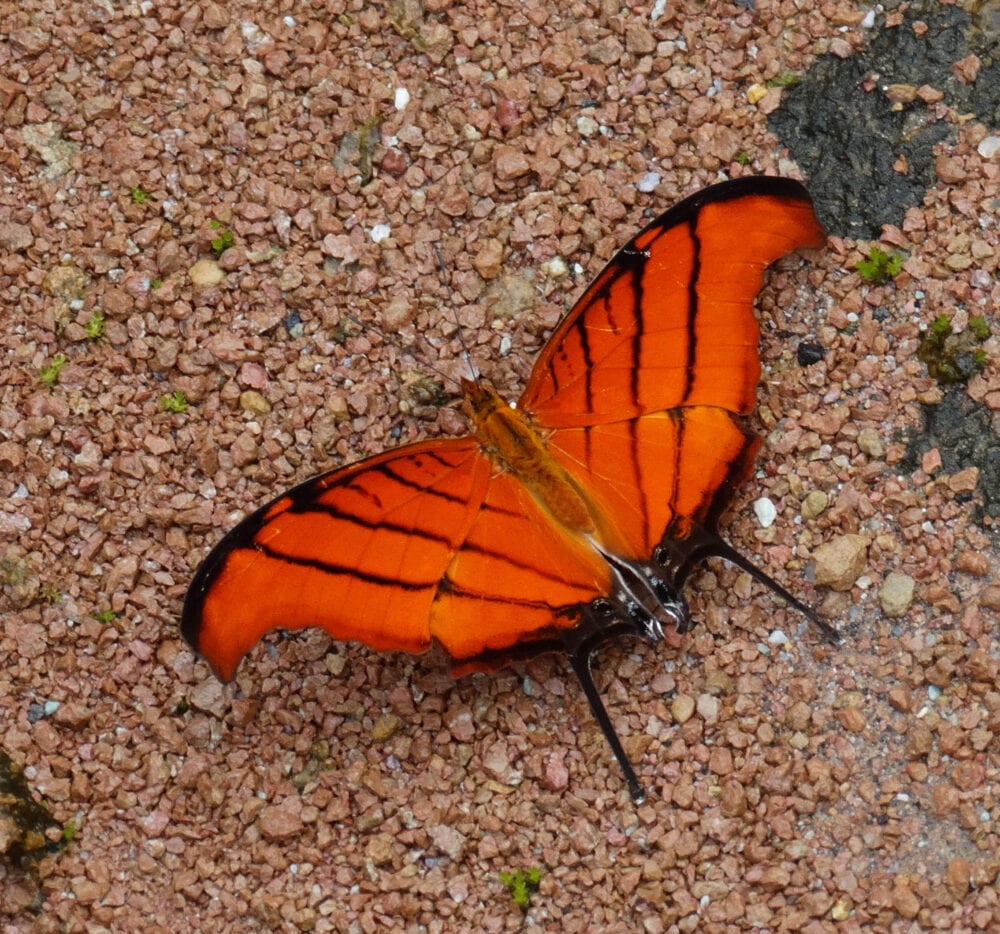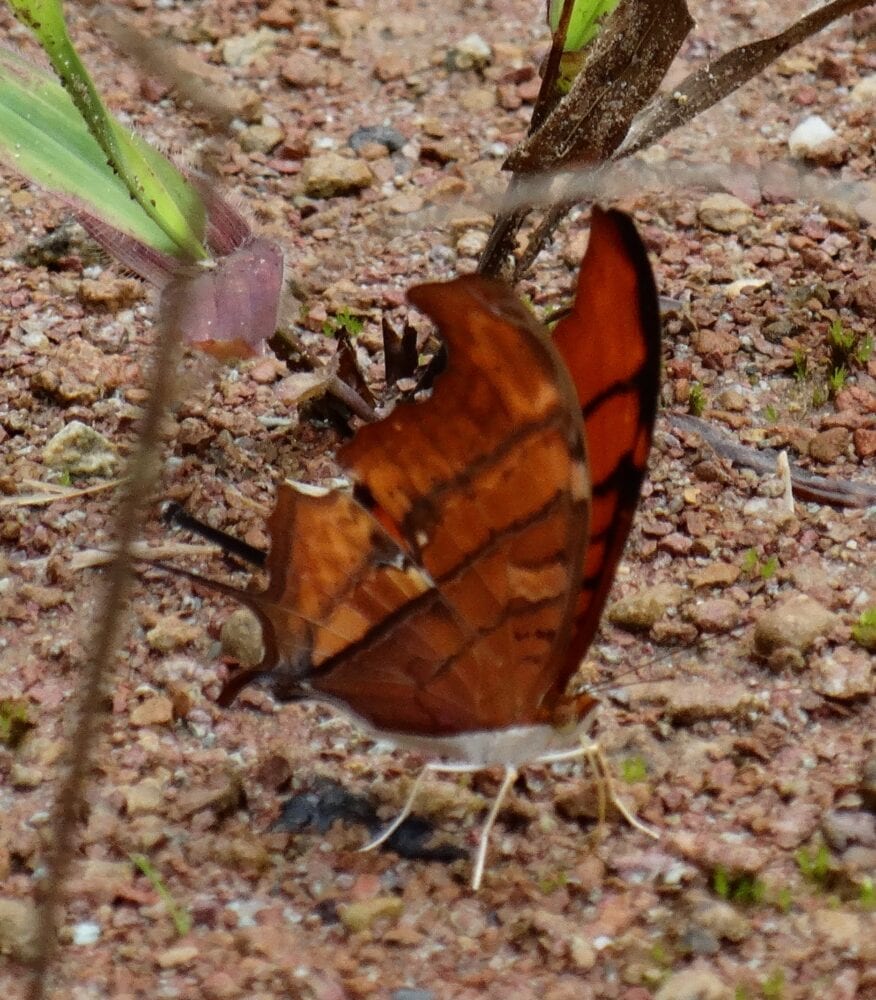by Steven J. Cary and Michael E. Toliver
The Brushfoots (Nymphalidae). This family is our second richest in terms of number of species and perhaps the most variable in terms of sizes, colors, patterns and behaviors. Despite the obvious differences in wing morphology, almost all members share a unifying structural character: on adults, the forelegs are reduced to tiny, brush-like structures, leaving only four functional legs. The exception that proves the rule is female Libytheinae, which have functional forelegs, emphasizing their ancestral status. Many of our most familiar butterflies are members of this family. Pursuant to Pelham’s (2023) catalog, we have ~100 species in ten subfamilies distributed as shown below. Other works may arrange, lump, or divide families in other ways. Updated June 26, 2023
Daggerwings (Nymphalidae: Cyrestinae). To date, New Mexico has been visited by only one species in this subfamily of beautiful tropical and subtropical butterflies.
Marpesia petreus (Cramer 1776) Ruddy Daggerwing (updated August 17, 2023)
Description. Marpesia petreus is about the size of a Leafwing (Anaea species). It is ruddy orange-red above with two slender, black lines crossing both wings. Ventral mottling and irregular margins create a persuasive dead-leaf illusion which is enhanced by dagger-like tails that mimic the leaf petiole. Range and habitat. Ruddy Daggerwing is tropical to subtropical, like its congeners. It is the commonest Daggerwing in the US, especially in Florida. Strays have been recorded as far north as Colorado, Nebraska and Virginia. Life history. Its larvae eat figs (Moraceae), none of which tolerate New Mexico winters. Southeast Arizona does have native figs, however, and seasonal breeding has been confirmed there on introduced figs (Bailowitz and Brock 2022). Flight. Ruddy Daggerwings are multivoltine in their tropical haunts. They rarely enter New Mexico and then only as a result of the warm, moist, southerly atmospheric flow associated with our summer monsoon and its considerable wake. Adults take nectar and fly fairly high, often beyond reach of camera and net. Comments. There are five New Mexico reports. Our first was from Guadalupe Canyon (Hi) on 1 November 1984 (S. Cary). The late Ralph Fisher caught one at Mangas Springs (Gr) on 20 July 1985. Roy Michelotti photographed a third way up north in Los Alamos (LA), on 8 Sept. 2013. Kilian Roever reported one from Blair Well, Peloncillo Mts. (Hi) on 30 July 2013. Our most recent sighting was by J. E. Zabriskie south of Mesilla (DA) on 17 October 2021. Four species of Daggerwings have been recorded from the US; the Many-banded Daggerwing, Marpesia chiron (Fabricius, 1775), has been recorded (once) from SE AZ and has strayed to Kansas. It may eventually show up in NM.



